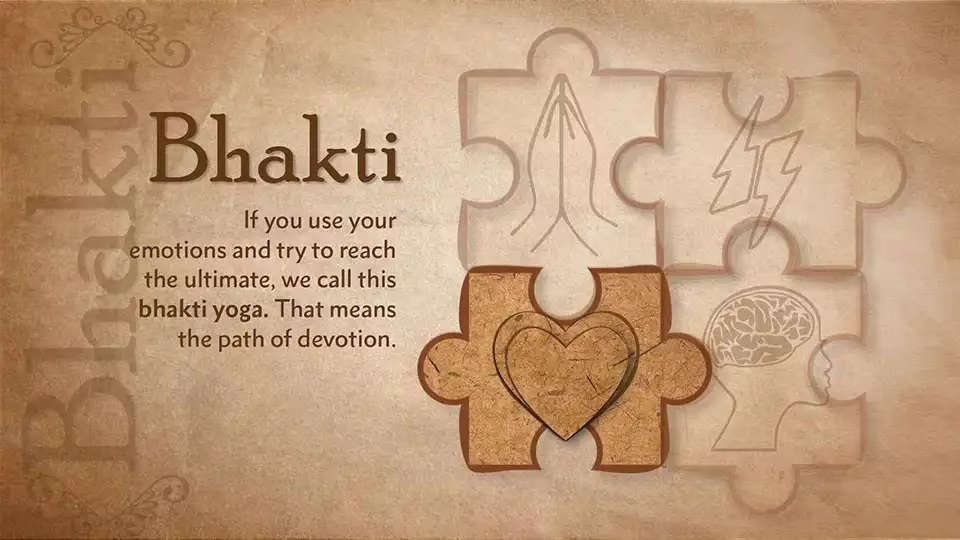


BHAKTI YOGA
It is known as the path of devotion. This path contains the various practices to unite the Bhakta with the divine. The deeply spiritual practice for the emotional and devotional people which draws heavily on the hindu pantheon of deities.
There are nine practices of Bhakti Yoga (Nivabida Bhakti)
a) Shravanam – ‘Listening’ the name of god, mantras or shlokas, etc.
b) Smarnam – ‘remembering’ the god by taking the name and their form. c) Kirtanam – ‘Singing’ devotional songs.
d) Archanam – ‘offering’ something to god.
e) Vandanam – ‘Saluting’ before the image or sculpture of god.
f) Dasyam – ‘sevak’ by serving the will of god instead of one’s own ego.
g) Padseva – ‘service at the feet’ incorporates practice of selfless service. h) Sakhyam – ‘Friendship’ relationship established with the devotee.
i) Atmanivednam – ‘Self offering’ complete surrender of the self to divine.
Bhakti softens the heart and removes jealousy, hatred, lust, anger, ego, pride and arrogance. It infuses joy, divine ecstasy, bliss, peace and knowledge. The ultimate goal of practicing bhakti yoga is to reach the state of ras (essence) a feeling of pure bliss achieved in the devotional surrender to the divine.